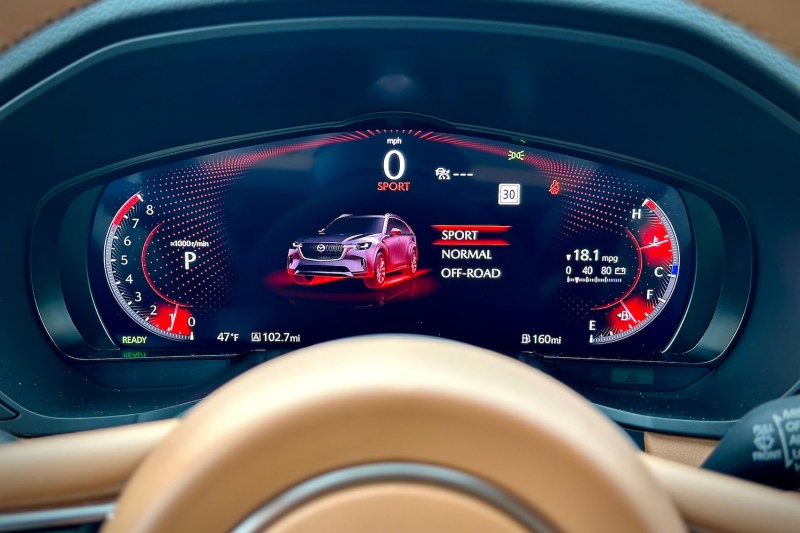
What does sport mode do? This is a question on many people’s minds, especially those who have purchased a vehicle within the last 10 to 15 years. Sport mode is usually found in a car as a switch, button, or knob labeled Sport. It is typically within easy reach of the driver’s seat.
If you’ve never used sports mode before and you’re one of the individuals who prefer to know what they’re getting into beforehand, then this article is for you. We’ve discussed what sports mode does and when you should activate it, whether it uses more gas, and which vehicles typically come equipped with it. Armed with this information, you’ll better understand if it’s a mode you should use on a daily basis when driving.
What does sport mode do?

In the most basic sense, “Sport mode” is a feature that improves a car’s response time to enhance a driver’s driving experience. This is accomplished through a car’s computer, which automatically adjusts specific settings like transmission shift points (if automatic) and throttle sensitivity.
Yet what effect does sport mode have on your vehicle’s throttle? This is a complicated question to answer. Usually, when sport mode is activated, it can help improve engine response, prompt upshifts, and delay downshifts to help keep the car’s engine in its designated power band, allowing for a smoother driving experience.
Other common sport mode attributes include more heavily weighted steering and stiffer tuning for adaptive suspension models. Moreover, sport mode can limit the total amount of intervention from a car’s traction-and-stability-control systems, allowing additional wheelspin and rotation when taking corners.
When activated, sport mode allows you to take corners more easily without your tires slipping or spinning. Of course, how well sport mode works will also depend on many other factors, including the type of vehicle you’re driving, the terrain, and weather conditions. Evidently, it’s a pretty handy driving mode.
When should you activate sports mode?

So, when should you activate sports mode? The answer varies depending on your driving style. However, for most people, sport mode is the way to go to maximize their car’s performance.
Sports mode will help make the steering heavier, the throttle response sharper, and the suspension less comfortable, so you should avoid using it during daily commutes and save it for when you’ve got a long and engaging strip of road ahead.
Activating and deactivating Sports mode is as straightforward as pushing or turning a button or flipping a switch, and better yet, it requires no pre-vehicle prep. However, some models offer an enhanced Sport mode feature, generally known as Sport Plus, which can further dial back traction control and stability while adding extra bite to the throttle and transmission programs. Activating this advanced Sport mode might be a little more involved, but it’s usually worth it.
Do you use more gas when sport mode is activated?

Although a great feature, Sports mode has a big disadvantage—it’s a gas guzzler. Switching to more performance-oriented transmission and throttle settings like sports mode enables your vehicle’s engine to rev higher and longer than it generally would during regular operation.
These higher and longer revs require more fuel, adversely impacting fuel economy over an extended commute, so using sport mode for day-to-day travel might not be the best idea.
Which vehicles typically come equipped with sports modes?

Sports mode was once reserved solely for luxury and high-end vehicles. Nowadays, it is available on various vehicles, from common trucks and minivans to sport utility vehicles (SUVs), electric vehicles, and sports cars.
That’s why it’s unsurprising that each vehicle type can provide distinctive performance variations once Sport mode has been activated. The end result, however, is essentially the same—a more responsive driving experience.
Below, we’ve listed a few different types of vehicles that offer Sport mode:
- Tesla Model S: The Sport mode in the Model S optimizes acceleration by delivering more power to the electric motors, resulting in quicker acceleration times.
- Porsche Taycan: The Taycan’s sport mode enhances acceleration and responsiveness by maximizing power delivery through its dual electric motors. It also adjusts the suspension, steering, and stability control systems to provide a more dynamic driving experience akin to a traditional sports car.
- Chevrolet Bolt EUV: In sport mode, the Bolt EUV enhances throttle response and increases power output from its electric motor, resulting in quicker acceleration.
The wrap-up on sport mode
Evidently, sport mode is worth using if you’re a driver looking to enhance your vehicle’s performance by adjusting the settings related to your car’s throttle response, acceleration, suspension, and steering. Through Sport mode, you can enjoy a more dynamic driving experience, so consider activating it during your next long drive to see how it improves your driving experience.




